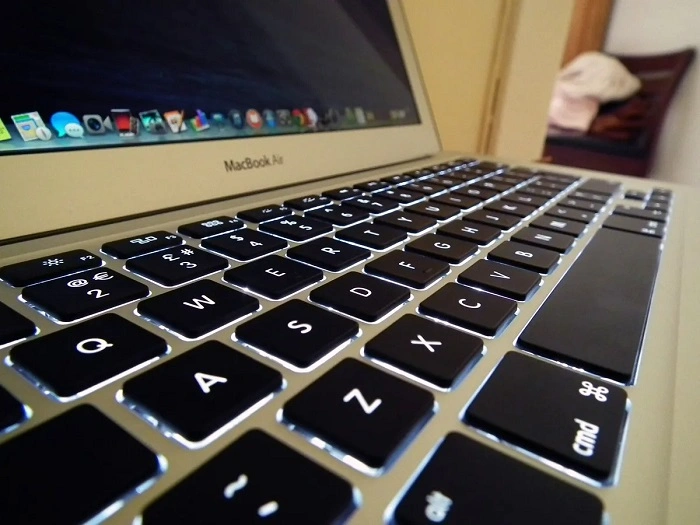The MacBook Air 2014 was once the gold standard for ultra-portable laptops. With its slim design, long battery life, and reliable performance, it became a go-to device for students, writers, and travelers. But now in 2025, is it still relevant?
Let’s explore the MacBook Air 2014’s hardware, software support, real-world performance, and whether it remains a practical choice for users on a budget or with basic computing needs.
Why the MacBook Air 2014 Was a Game Changer

Slim, Durable Design
The MacBook Air 2014 continued Apple’s trend of sleek, minimalist hardware. At just 2.38 pounds (for the 11-inch) and 2.96 pounds (for the 13-inch), it was one of the lightest laptops of its time. The tapered wedge design, aluminum chassis, and precise construction gave it both strength and portability.
Even today, the design looks modern. It’s thin enough to slip into a bag unnoticed and sturdy enough to handle daily wear and tear.
Legendary Battery Life
This model delivered up to 9 hours of battery life on the 11-inch version and up to 12 hours on the 13-inch model. Thanks to its energy-efficient Intel Haswell processors, it outperformed many competitors in its class. In 2025, with a healthy replacement battery, it can still push 6–8 hours on light usage.
MacBook Air 2014 Specifications
Here’s a quick breakdown of what the MacBook Air 2014 offered at launch:
- Intel Core i5 (1.4 GHz dual-core)
- Intel HD Graphics 5000
- 4GB or 8GB LPDDR3 RAM
- 128GB to 512GB SSD
- macOS Yosemite (upgradeable)
- USB 3.0 x 2
- Thunderbolt 2
- MagSafe 2 charging
- SDXC card slot (13-inch only)
These specs may seem modest by today’s standards, but they still support everyday computing tasks such as document editing, web browsing, and email.
macOS Support in 2025
The MacBook Air 2014 officially supports macOS Catalina. With tools like OpenCore Legacy Patcher, some users have upgraded to Big Sur or Monterey. However, running newer systems can result in performance slowdowns.
For optimal stability and speed, macOS Catalina remains the most suitable version. It supports most modern apps, including browsers, Microsoft Office, and Zoom.
Performance in Daily Use
For Students and Writers
If your workflow involves typing, researching, attending Zoom classes, and using Google Docs, the MacBook Air 2014 still performs reliably. The keyboard is responsive, and the screen resolution (1440×900) is crisp enough for reading and writing.
For Casual Browsing and Media
Streaming videos on YouTube, watching Netflix, browsing the web, and using social media are all still possible. Just don’t expect smooth performance with multiple high-res video streams running at once.
For Light Creative Work
Photo editing in Preview or using lightweight tools like Pixelmator works, but heavy Photoshop or video rendering is outside this model’s comfort zone.
Upgrading the MacBook Air 2014
Unlike earlier MacBooks, the 2014 Air has soldered RAM and a proprietary SSD. That means:
- RAM cannot be upgraded after purchase
- SSD can be upgraded, but you’ll need special tools and a compatible NVMe adapter or OWC drive
A storage upgrade can breathe new life into the MacBook Air 2014, especially if you’re dealing with space limitations.
Battery Health and Replacement
Battery degradation is expected after 10+ years. If your MacBook Air 2014 isn’t holding charge like it used to, replacing the battery is affordable and DIY-friendly. Replacement batteries are available online for around $50–$80.
With a new battery, the laptop becomes far more usable for mobile work and daily errands.
Connectivity and Ports
One reason people still love the MacBook Air 2014 is the wide range of ports:
- 2x USB 3.0 ports
- Thunderbolt 2 (great for external monitors or storage)
- SDXC card reader (13-inch only)
- Headphone jack
- MagSafe 2 power port
You can connect flash drives, external displays, and even old-school projectors without needing extra dongles.
Should You Buy the MacBook Air 2014 in 2025?

The MacBook Air 2014 is best suited for:
- Students with light computing needs
- Writers or bloggers
- Seniors or casual users who need a simple, reliable laptop
- Travelers who want a durable machine for offline work
- Budget shoppers under $200
It’s not ideal for users who:
- Need pro-level apps
- Require the latest macOS features
- Use high-end video or photo editing tools
- Prefer Retina displays
Buying Tips in 2025
If you’re buying secondhand, make sure to:
- Check the battery cycle count (under 800 is preferred)
- Confirm storage capacity is sufficient for your needs
- Verify that the keyboard and display are fully functional
- Look for clean units with minimal wear on corners and hinges
Expect to pay between $120–$250 depending on condition and specs.
FAQs About MacBook Air 2014
Is the MacBook Air 2014 still usable in 2025?
Yes, for everyday tasks like browsing, writing, and streaming, the MacBook Air 2014 still performs well with macOS Catalina.
Can I upgrade the MacBook Air 2014 to the latest macOS?
Officially, it supports up to macOS Catalina. Unofficially, tools like OpenCore can allow upgrades, but performance may suffer.
Does the MacBook Air 2014 have Retina display?
No. It features a 1440×900 resolution screen. While not Retina, it’s still clear and readable for most tasks.
How long does the battery last on MacBook Air 2014?
With a new battery, you can expect 6–8 hours of light use. Original batteries may last only 2–3 hours after a decade of use.
Can I still use iCloud and Apple services on the MacBook Air 2014?
Yes. As long as you’re using macOS Catalina or newer, you can sync with iCloud, Messages, Mail, and other Apple services.

